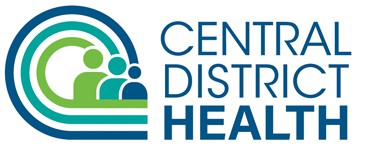CDH’s Public Health Preparedness is charged with planning for, responding to, and recovering from public health emergencies in Ada, Boise, Elmore, and Valley counties and helping our communities and families be prepared for just such an event. Our simple disaster planning steps can help you prevent disease and injury during an emergency.
CDH Emergency Operations Plan (EOP), supporting annexes, and supporting stand-alone plans detail our response to natural or manmade disaster, communicable disease outbreak or other public health emergencies. CDH has integrated the National Incident Management System (NIMS) and the Incident Command System (ICS) in our planning, training and exercising efforts.
CDC – Cities Readiness Initiative (CRI)
CRI is a federally funded program that enhances preparedness in the nation’s largest population centers, where nearly 60% of the population resides. The program prepares areas to effectively respond to large public health emergencies with life-saving medicines and medical supplies.
State and large metropolitan public health departments use CRI funding to develop, test, and maintain emergency response plans. These plans detail how health departments will quickly receive medical counter measures from the Strategic National Stockpile (SNS) and distribute them to local communities.
SNS is the nation’s largest supply of medical countermeasures for use in a public health emergency severe enough to deplete local supplies.
Also referred to as Business Continuity Planning, COOP Planning attempts to mitigate the lasting impact and interruption to business practice resulting from a catastrophic event or disaster, including flood, earthquake, and pandemic influenza.
While many Federal and State agencies are focused on developing plans for COOP and Continuity of Government (COG), Central District Health would like to encourage our local business partners to address their own COOP processes to ensure their ability to continue to provide goods and services to our communities in disaster situations. Below are some suggested sources of information to aid in this process.
Education
FEMA – Intro to COOP Planning for Pandemic Flu – IS 520
Introduces students to the characteristics of a pandemic, the effects that a pandemic can have on our society, and the steps organizations can take to minimize the effects of a pandemic.
Northwest Center for Public Health Practice (NWCPHP) training:
Resources
FEMA – Continuity of Operations Programs
IOEM – Idaho Continuity of Operations/Continuity of Government
DHS – Plan to Stay in Business
DHS – Family Disaster Plan
To prepare yourself and your family by creating an all-hazards disaster preparedness kit.
DHS – Prepare a Disaster Supplies Kit
Assemble supplies you might need in an evacuation or if you are confined to your home and store them in an easy-to-carry container, such as a backpack or duffle bag.
CDC – Extreme Cold
Learn how to prepare for winter storms, prevent cold temperature-related health problems and protect yourself during all stages of a winter storm with this guide.
YouTube – Are you Red Cross Ready
Oregon School for the Deaf (OSD) created this video in American Sign Language (ASL) to help the American Red Cross Willamette Chapter in Salem, Oregon reach more people in the community.
CDC – Emergency Preparedness and Disability Inclusion
Web portal dedicated to disability inclusion in emergency preparedness and response efforts. Developed in collaboration with partners and members of the disability community, this web portal serves as a resource hub on all-hazards preparedness to support people with disabilities. This information can help people with disabilities consider steps they can take to plan ahead for emergencies and know what to do if an emergency happens in their communities.
CONTACT
Can’t find the information you need? Please complete the form or give us a call.

